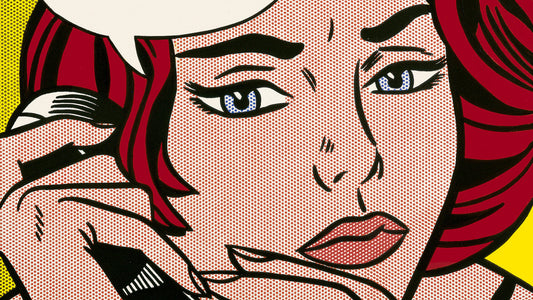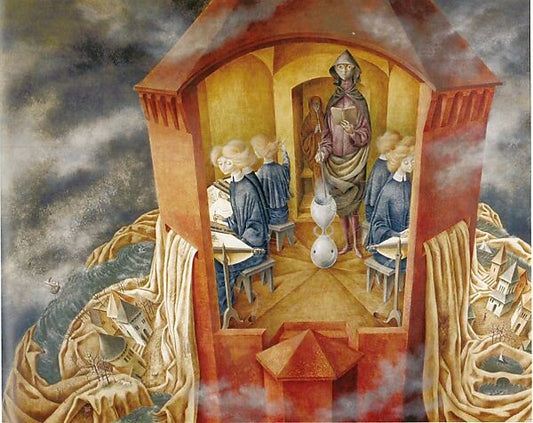Feature image: “The Soup,” 1903. Oil on canvas. Image courtesy of Smithsonian Magazine
American graphic designer Lou Dorfsman says, “Creativity is essentially a lonely art. An even lonelier struggle.” Picasso claimed, “Without great solitude, no serious work is possible.” Even earlier, Aristotle wrote, “Whosoever is delighted in solitude is either a wild beast or a god.” Sociality and relationships are a fundamental aspect of the human experience.
However, many creatives value isolation as an artistic muse. As such, it is a commonly accepted cultural truth that artists are loners. The idea of the introverted artist has been a trope for centuries. William Shakespeare wrote King Lear, Antony and Cleopatra, and Macbeth during isolation during the plague. According to science, loneliness and creativity are linked. A study published in the Dec 2020 issue of Nature Communications found that the area of the human brain linked to creativity and imagination strengthens when alone. Other studies find that this is no coincidence. Some creatives purposefully withdraw or keep to themselves. Virginia Woolf famously claimed that her desire to be alone gave her a sense of wisdom and creativity.

Isolation doesn’t necessarily have to be lonely. The trope of isolated, tortured genius pervades our cultural narrative. Whether this isolation is a chosen preference or an involuntary circumstance, it influences art and inspires artists to create meaningful pieces. Isolation can be a double-edged sword, potentially fostering profound feelings of loneliness yet simultaneously liberating artists from societal constraints.
Isolation has long been a catalyst for creativity in the lives of artists, as it allows them to explore the depths of their psyche and channel their inner turmoil into their artwork. This phenomenon is evidenced by artists such as Edvard Munch, Frida Kahlo, Yayoi Kusama, and Joseph Beuys.
The Life of Edvard Munch and the Scream of Solitude
Born in Oslo, Norway, in 1863, Edvard Munch was a tormented soul from an early age. In his youth, his mother and sister died of tuberculosis. His only brother died of pneumonia. After the death of his father, he moved to France, marking a very troubling and anxious time in his life, and he suffered several mental breaks.

Many people today believe Munch to have suffered from agoraphobia. He had many periods of solitude and isolation, some deliberately. He has a vast collection of anxiety paintings. Many interpret his most famous work, The Scream, to be a reflection of anxiety in an open, public space. The painting depicts an internal feeling of anxiety.
"Tongues of fire and blood stretched over the bluish-black fjord. My friends went on walking, while I lagged behind, shivering with fear. Then I heard the enormous, infinite scream of nature. Nature is not only all that is visible to the eye… it also includes the inner pictures of the soul.”
Joseph Beuys: Isolation as Performance
Joseph Beuys was a German artist known for contributing to the Fluxus movement. He saw life itself as a form of art. The “social sculpture” concept was central to his art. It was a philosophy that claimed that everyone, through their actions and interactions, could contribute to shaping society as an ever-evolving work of art.

Beauys’ philosophy paved the way for exploring isolation as a performance art form. In 1971, he embarked on an artistic experiment called I Like America and America Likes Me. He spent three days and three nights locked in a small room in the back of a gallery with a coyote. Two black and white photographs documented the experimental performance. The project explored the fractured relationship between humanity and the natural world. In many indigenous religions, coyotes are a significant symbol of transformation and trickery, which contrasted greatly with American observations of the animal, which saw it as a dangerous pest. As such, Beuys felt that America needed to reckon with the animal to lift its societal trauma. At the end of the three days, the coyote became tolerant of the artist and accepted a hug.
Frida Kahlo: Strength in Solitude
Frida Kahlo was an exceptional artist whom art historians, art lovers, and the rest of her audience celebrate for her vivid and vulnerable self-portraits. Her periods of isolation were often a result of her physical health. She spent extended periods of her life bedridden or confined to her home due to her many health conditions, including being diagnosed with polio at age 6, a near-fatal bus accident at age 18, and 32 surgeries throughout her life. She used her art to cope with her pain and boredom. Her self-portraits served as a means of introspection. She claimed, “I paint self-portraits because I am so often alone because I am the person I know best.”

Themes of isolation, suffering, and resilience surround her work. For example, Las Dos Fridas (The Two Fridas) depicts her dual identity and emotional isolation. The double self-portrait was completed during her divorce from Diego Rivera. On the left, Frida portrays herself in modern European clothing, wearing the dress from her wedding. On the right, she wears traditional Mexican attire. This Frida holds a locket with an image of Rivera. Both women’s hearts are exposed through their dresses. They are connected through their outstretched hands and joined arteries, emphasizing the connection between both versions of the artist. Kahlo’s self-referential art is a testament to the power of art to explore oneself.
Yayoi Kusama: Infinity Mirrors and Solitude
Born in Japan in 1929, Yayoi Kusama is renowned for her avant-garde and immersive artwork. She faced mental health issues throughout her life. She has voluntarily lived in a psychiatric hospital in Tokyo since 1977. Her experience with solitude and her struggles with mental health became essential elements of her art.
Inspired partly by her hallucinations, Yayoi Kusama began creating her signature “infinity nets,” which she painted obsessively during isolation. For Kusama, the repetitive brushstrokes of these abstract works are a valuable form of art therapy. These pieces are representations of the infinite nature of the universe. One of her most famous pieces is the “Infinity Mirror Rooms,” an immersive exhibit that transports viewers into endless reflections. They offer an experience of solitude and infinity, where visitors can enter a room of infinite reflections.
There is a profound relationship between isolation and artistic expression. While solitude may carry the weight of loneliness and intense emotions, it also possesses the capacity to liberate the mind, serving as a space where artists can confront their innermost fears, cope with personal or systemic trauma, and channel their energy into creating art. In a post-pandemic world, many people are still dealing with the effects of isolation. The stories of these artists remind us that isolation is an enduring muse for creatives, no matter its source.
©ArtRKL™️ LLC 2021-2023. All rights reserved. This material may not be published, broadcast, rewritten or redistributed. ArtRKL™️ and its underscore design indicate trademarks of ArtRKL™️ LLC and its subsidiaries.






